| lancaster |
| (.470 member) |
| 17/06/13 05:02 AM |
|
|
just see this accidental
it seems its out of service now but have anyone ever seen this drilling for sale? btw, its the only gun I have ever seen in 32 ga with a 70 mm/2 3/4 long chamber. it seems the russians made for some time 32 ga 70 mm long brass cases probably also the only drilling in 5,45x39 ever made.
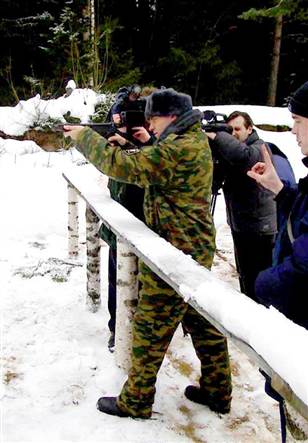
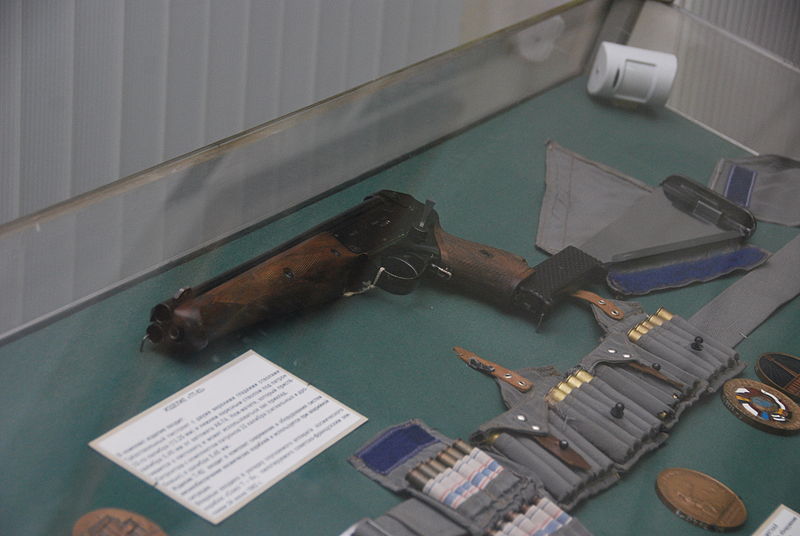
In service 1986–2006
Specifications
Weight 2.4 kg (with stock)
Cartridge 5.45×39mm (below) and 12.5×70 shotgun shells (above)
Barrels 3
Effective range 200 meters
Feed system Break-open
Sights Iron
The TP-82 pistol (Russian: ТП-82) was a triple-barreled Soviet firearm that was carried by cosmonauts on space missions.
It was intended as a survival aid to be used after landings and before recovery in the Siberian wilderness. The upper two smoothbore barrels used 12.5×70 mm ammunition (32 gauge), and the lower rifled barrel used 5.45×39mm ammunition. The pistol could be used for hunting, to defend against predators and for visible and audible distress signals. The detachable buttstock was also a machete that came with a canvas sheath.
TP-82s were carried regularly on Soviet and Russian space missions from 1986 to 2006. They were part of the Soyuz Portable Emergency-Survival Kit (Носимый аварийный запас, Nosimyi Avariynyi Zapas, NAZ). In 2007, the media reported that the remaining ammunition for the TP-82 had become unusable and that a regular semi-automatic pistol would be used on future missions.
http://en.wikipedia.org/wiki/TP-82
anti gun but some more informations about it
HOUSTON — All self-respecting “space cadets” of the 1950s carried holstered sidearms to fend off the spies, wandering carnivores and assorted bug-eyed monsters they might meet in space. That was Hollywood, of course. The notion that modern space cadets blast off carrying guns is so silly that space officials won't even talk about the idea. But that does not mean the astronauts are not armed.
In fact, Moscow’s latest diplomatic offensive to get a treaty banning weapons in space may be shot down by one of the proposed pact's little-noticed provisions: Nobody else should get to put weapons in space, but Russia gets to keep the ones it already has.
Cosmonauts regularly carry handguns on their Soyuz spacecraft — and actually, that's not unreasonable. There are practical and historical justifications.
Last fall’s off-course landing of a returning Russian Soyuz spaceship, with three fliers aboard, served as a reminder that unpleasant "contingencies" can occur on even the most sophisticated space mission. Prudence dictates that some precautions be made ahead of time to handle such problems, as long as the precautions don’t introduce more hazards than the original contingency they were designed to neutralize.
The potential for landing far off course, beyond the reach of rescue forces for hours if not days, has led Russian space engineers to add special emergency kits to their landing capsules. These kits contain food rations, water bottles, warm clothing, rope for making a shelter using the capsule’s parachute, fish hooks and miscellaneous other survival gear. Gemini and Apollo spacecraft carried similar kits.
For decades, the standard Soyuz survival pack has included a gun. And not just any gun, but a deluxe all-in-one weapon with three barrels and a folding stock that doubles as a shovel and contains a swing-out machete. Three types of ammunition — rifle bullets, shotgun shells and flares — come in a belt attached to the gun.
Video: Why do Russians have guns in space? Plans are to use it only in special circumstances on return to Earth — but in space, on occasion, plans have a way of turning out very differently. The presence of the gun, especially in light of recent space team psychological problems, may be an invitation to a future disaster.
Advertise | AdChoices
Dropping a space bombshell
Just before last October's Soyuz launch, a British news report said that the gun, manufactured by a factory that is now in an independent country, was being phased out because all the in-stock ammunition had exceeded its certified shelf life. In its place, a standard Russian army sidearm was now to be carried.
Following up on that report, I asked Soyuz commander (and current space station resident) Yuri Malenchenko during a downlinked news briefing whether this story was true — whether there had indeed been a change in the type of weapon included in the survival kit.
Slideshow: Month in Space: May 2013 After a long and lively conversation with other members of the crew, televised but with the sound off, Malenchenko answered. He denied any knowledge of a change in the type of gun, and expressed only marginal familiarity with the existence of the gun at all. He launched into the official rationalization for needing protection in case of being lost during return to Earth —an issue I had never disputed.
The two other members of his Soyuz crew — one of them, a NASA astronaut — hung in the background, silent. They had trained with the gun as part of flight preparation, too — but they weren’t about to say anything if they weren’t directly asked.
The press office at NASA's Johnson Space Center in Houston adamantly refuses to discuss the gun, saying it is a piece of Russian hardware and needs to be described by the Russians. (They know full well that the Russians have never, and probably never will, respond to such queries). NASA representatives profess to have no photographs of Americans training with the gun, although there are plenty of other training photographs from Moscow showing Americans doing other preparatory practice.
The only weapons-training photographs ever released are on the Web sites of two private spaceflight participants, South Africa's Mark Shuttleworth and Iranian-American entrepreneur Anoushah Ansari, both multimillionaires — and both of whom have posed for a photo with the gun in their hands.
Carrying the firearm
In flight, the gun is packed in a metal canister that remains stashed between two of the three couches in the Soyuz. If all goes well, the canister is never opened. At the end of the mission, after landing, the gun is usually presented as a gift to the Soyuz spacecraft commander.
Originally, guns began being packed on Soyuz flights after a far off-course landing in March 1965 led to stories of encounters with wolves (or in some versions, a very hungry bear). Cosmonauts loved recounting these stories, even though official accounts later made it clear that some wolves had only been spotted by a rescue helicopter a mile or two from the downed capsule, and chased off from the air — the cosmonauts never even saw them. But good survival stories are hard to resist.
Guns were never carried aboard U.S. spacecraft. Instead, a sharp machete served as the most serious armament for a jungle landing. Besides, with a worldwide U.S. network of bases and existing air-sea rescue forces, odds were that any downed astronauts would be found and rescued pretty quickly. The same now goes for Soyuz spacecraft supporting the international space station and usually carrying an U.S. crewmember at launch and landing — any off-course vehicle would have the entire U.S. rescue team at their disposal almost immediately. But the legend of the hungry wolves trumps current realities, so the guns have remained.
Learning to space shoot
Still, the guns are fun to have — or at least a lot of fun to train with. Familiarization with the gun usually takes place during survival training in the Black Sea, when the crews train to safely exit a spacecraft floating on the water (although a firing range at the cosmonaut center at Star City near Moscow is sometimes used for training). After floating around in the water for a day or two, the astronauts and cosmonauts take a few hours to fire several rounds from each chamber off the deck of the training ship.
"It was amazing how many wine, beer and vodka bottles the crew of the ship could come up with for us to shoot at," astronaut Jim Voss, who spent a stint aboard the international space station in 2001, told me.
"It was very accurate," he continued. "We threw the bottles as far as possible, probably 20 or 30 meters, then shot them. It was trivial to hit the bottles with the shotgun shells, and relatively easy to hit them with the rifle bullets on the first shot."
Advertise | AdChoices
Astronaut Dave Wolf, who spent four months aboard Russia's Mir space station in 1997-98, agreed that the space weapon was "a wonderful gun."
"I found it to be well-balanced, highly accurate and convenient to use," Wolf said.
Mike Foale, the only astronaut who served aboard both Mir and the international space station, trained with the gun and found it to be pretty standard. “Other than firing flares, birdshot and a hard slug from its three barrels, during sea and winter survival training, I can’t say it is very unique,” he told me. He added, as if in reassurance, “The Soyuz commander controls its use.”
Should space be a gun-free zone?
And here’s the safety issue that nobody seems to want to talk about. As the space station crew size increases, with a much wider range of crew members (including paying passengers, either tourists or representatives of national research groups from Malaysia, Chile, Venezuela or elsewhere), everyone on board will have access to the gun in the Soyuz. By 2009 there will always be two Soyuzes attached, so two guns will be available.
Perhaps a year or so ago, nobody would have raised an eyebrow over "trained spacefarers" being able to grab a gun at will, for whatever reason they felt like. But in the wake of the past year's tragic violence involving professional astronauts and space center veterans, and in light of stories now surfacing over psychological crises on past missions (including one threatened suicide that the mission commander took very seriously), the open access to such lethal hardware needs reappraisal.
At the very least, the survival kit needs to be locked, with the key (or combination) in the possession of the capsule commander. The very presence of the gun probably also needs to be reviewed again, to determine if it is a critical piece of safety gear or a space disaster just waiting to go off.
The next Soyuz launch is set for April 8. The handgun is probably already packed. If Moscow wants to show it is really serious about keeping space “weapons-free,” and keeping orbiting astronauts and cosmonauts free of too-easy access to lethal weapons, the gun ought to be removed. Carry a machete, carry a Taser — but stop carrying guns into space.
http://www.nbcnews.com/id/23131359/#.Ub4G8pywe9U
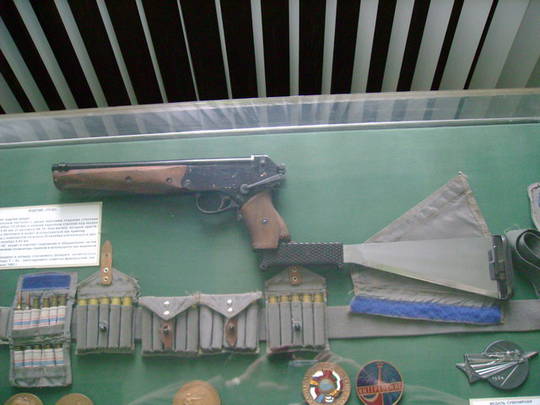
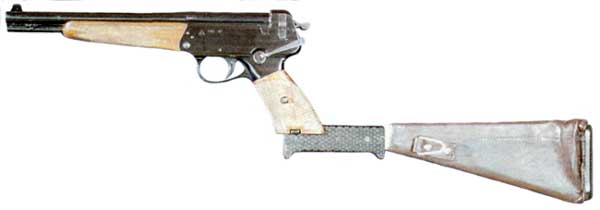
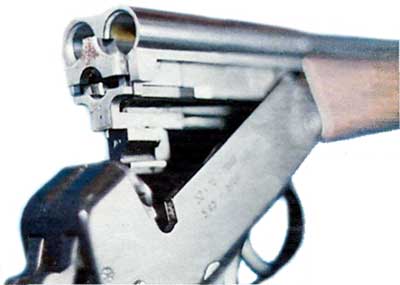
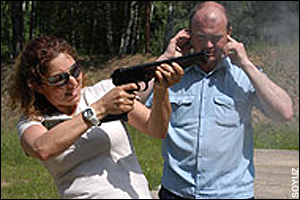
http://www.google.de/imgres?q=tp+82&...&ved=1t:429,r:7,s:0,i:104